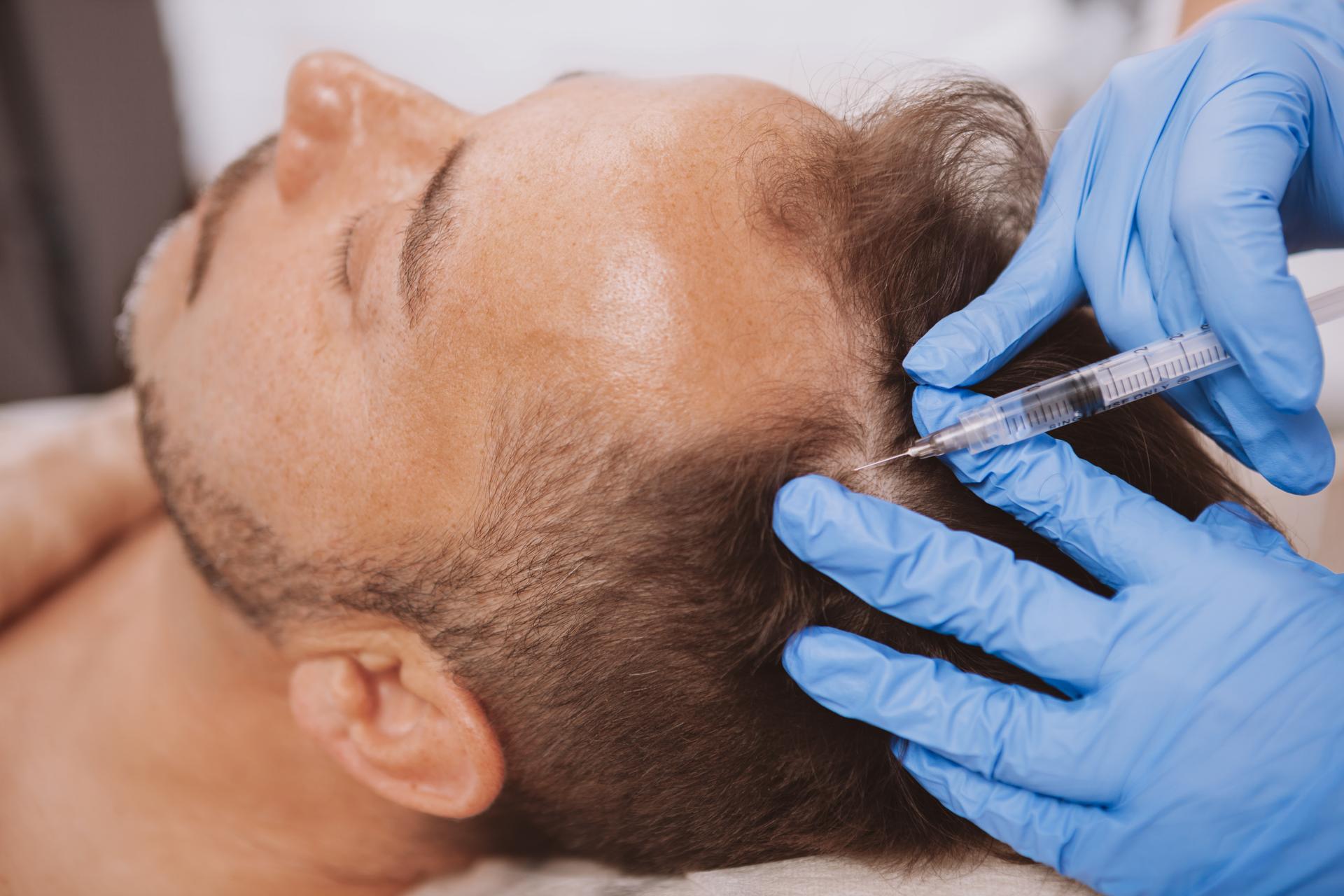The advancements in medical technology have helped to improve hair transplant surgery methods significantly over the recent years. However, scarring remains an unavoidable side effect of the treatment. The amount of scarring you have is mainly determined by your surgeon’s skill and experience, along with other factors like your age and scalp condition. In present times, two types of surgical procedures are commonly suggested for doing hair transplantation, i.e., FUT and FUE. However, both these methods cause a distinct form of scarring.
Hair Transplant Procedure – An Overview
Here’s an overview of the two most common surgical procedures used for hair restoration:
1. FUT (Follicular Unit Transplantation)
In this procedure, a strip of the scalp is surgically removed from the donor area, typically from the backside of the scalp. This area is sutured together once the hair strip has been removed. This usually leaves behind linear scars on your scalp, which may vary in length depending on the size of the hair strip extracted. The next step is to remove the hair follicle grafts from the scalp strip and transplant them to the recipient area. The surgeon may have to make small incisions on the recipient area for the transplant procedure to place each hair. This procedure is usually done on an outpatient basis using local anesthesia. This procedure might need stitches that will require removal approximately after ten days.
2. FUE (Follicular Unit Extraction)
In this procedure, hair follicles are extracted from the donor areas individually with a micro-punch tool. This can lead to tiny round scars in your scalp around each extracted hair follicle, up to 1 millimeter in diameter. Depending on the number of hair follicles extracted, this procedure can leave hundreds or thousands of scars on the donor area. As the next step, each individual hair follicle is transplanted onto the recipient areas of the scalp. This procedure is usually done on an outpatient basis using local anesthesia. Typically, no stitches are involved in this surgical procedure.
See Also: Is It Possible to Regrow Hair on Bald Spots?
Factors That Determine Your Hair Transplant Technique
FUT and FUE are equally effective and successful in hair regrowth. However, remember that one method will not be a good fit for everyone. Despite this, usually, it’s impossible to differentiate one from another as the recipient site procedure is similar for both techniques.
Before deciding what is best for the patient, the surgeon usually considers the following facts.
- Age and attitude of the patient
- The extent of hair loss
- Quality and amount of hair available in the donor area
- Size of the recipient area
Related: Can I Go Bald After a Hair Transplant Surgery?
Hair Transplant Scar Removal Methods
Several procedures can help to reduce the size of the scar generated through the FUT procedure. However, these procedures may not always be fully effective, and some scarring will almost always remain. Additionally, when your scalp starts to sag as you age, the scars will become broader and more visible.
For example, a good scar removal option is grafting hair follicles using the FUE method into the FUT scar. One key point to note here is that the effectiveness of this procedure will depend partially on the thickness of the scar.
In some cases, it may be a good idea to use medications to thin the scars. Your doctor will be able to tell you which of these methods works best for you.
1. Concealing Hair Transplant Scars
There are mainly three procedures that will help you to conceal your hair transplant scars. They are discussed briefly below.
2. Scalp Micropigmentation (SMP)
This technique is also known as scalp hair tattooing. This is a permanent procedure in which a pigment that matches your hair color is injected directly into the scalp, giving the impression of thicker hair. This procedure is also beneficial in coloring the scarred areas left behind by FUT or FUE.
3. Tricopigmentation (TMP)
This can be considered as a temporary form of SMP. It provides semi-permanent inking because it injects the ink into the top layer of the dermis. The duration of this procedure may vary anywhere between six months to three years, depending on the clinic you choose for the treatment.
4. Laser therapy
Laser therapy, which is frequently used in combination with SMP or TMP, is an excellent hair transplant scar removal method that can help decrease the appearance of scars. The laser targets and eliminates the damaged skin on the scar’s surface. It also stimulates collagen synthesis in the dermis layer of the skin, improving suppleness and overall skin appearance.
If you are looking for the best hair transplant doctors in New Jersey who would ensure minimal scarring, then the New Jersey Hair Restoration Center is the perfect option for you. We can customize your hair restoration treatment based on your preferences and medical requirements. Schedule an appointment with our hair restoration experts today, and we will be more than happy to help you.


